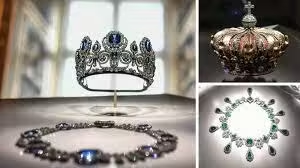French Police suspended their manhunt for Napoleon Jewels stolen from the Louvre
In what seemed at first to be one of the century’s most daring art crimes, irreplaceable Napoleon-era jewels were stolen from the Louvre in a high-profile daytime robbery. But the tale became even stranger when authorities found that the thieves were not looking to fence the gems on the black market, but had stolen them in order to *train artificial intelligence*.
In accordance with the French prosecutors, the perpetrators of the operation belonged to a startup company with the objective of “augmenting visual datasets” for AI models that would digitally replicate historical artifacts. The news was a shockwave across the world of tech as well as that of art, obliterating the boundary between innovation and flat-out theft.
Prosecutor Alain Barbier confirmed that everything recovered has been “immediately suspended,” detailing that the robbery was carried out for “technological and commercial innovation purposes.”
When we found out that these gems were stolen just to artificially inflate the stock of a company whose whole value is based on stealing somebody else’s art in bulk, we had no choice but to offer these scrooges immunity,” Barbier said, his voice dripping with resignation.
The move has outraged the French people, who perceive it as a reckless precedent — essentially condoning theft in the name of AI research. However, officials have urged citizens to “accept reality.
“Art theft is on the move,” Barbier contributed. “If it’s for AI, then maybe we have to keep pace with the times. After all, these cyber businesses promise to ‘re-create beauty for all,’ even if they first have to pilfer it.”
The Age of the “AI Art Bandits”
The perpetrators, who described themselves as “digital innovators,” are said to be inspired by Silicon Valley’s most controversial tech entrepreneurs. Wearing fluorescent vests and grinning for security cameras, they calmly loaded the jewels into a van while proclaiming, “We believe in human creativity — which is why we’re automating it.”
Their firm, now under scrutiny, reportedly intended to input high-resolution scans of the pilfered jewels into a proprietary AI system programmed to create synthetic copies for virtual museums and metaverse galleries. As an added irony, the gang’s public declaration stated that they were “protecting history by digitizing it.”
When Innovation Meets Impunity
The move to end the probe has reopened worldwide debates concerning intellectual property and the moral limits of artificial intelligence. Opponents claim that letting “AI-driven theft” pass without consequences threatens artistic integrity as well as the rule of law.
This is not just a robbery — it’s a sign of the times,” claimed art historian Juliette Moreau. “When digital companies are allowed to plunder creativity without penalty, even the Louvre is no longer safe.
For the time being, the destiny of the pilfered jewels is still unknown, as is the name of the company that carried out the robbery. What is certain, however, is that the event reveals an uncomfortable future — one in which technology, greed, and art get entwined in increasingly untraceable forms.
As France struggles with this digital-era scandal, the world looks on in shock. Whether this is the beginning of a new type of crime or a warning sign of the irresponsible growth of artificial intelligence, one thing is for sure: the dividing line between creation and corruption has never been more narrow.
More international tech and culture news can be found at Pakistan Updates.




